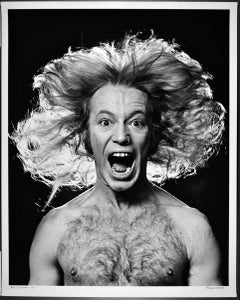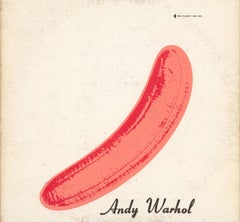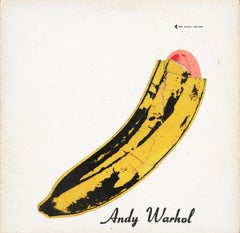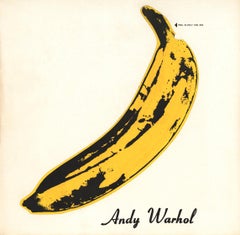Eric Emerson
1970s Pop Art Black and White Photography
Silver Gelatin
1970s Pop Art Black and White Photography
Silver Gelatin
1960s Pop Art More Art
Offset
Recent Sales
1960s Pop Art Prints and Multiples
Offset, Lithograph
1960s Pop Art More Art
Mixed Media, Offset
1960s Pop Art Mixed Media
Mixed Media, Offset
1960s Pop Art Mixed Media
Mixed Media, Offset
1960s Pop Art Mixed Media
Mixed Media, Offset
1980s Pop Art Figurative Prints
Screen
People Also Browsed
21st Century and Contemporary Swedish Mid-Century Modern Table Lamps
Textile
21st Century and Contemporary Japanese Anglo-Japanese Table Lamps
Metal
1980s Pop Art More Art
Offset
1950s Post-War Nude Photography
Silver Gelatin
1980s Pop Art Prints and Multiples
Offset, Lithograph
Vintage 1950s American Mid-Century Modern Photography
Paper
1980s Pop Art More Art
Lithograph, Offset
19th Century Academic Nude Drawings and Watercolors
Paper, Carbon Pencil
2010s North American Wall Mirrors
Glass, Mirror
2010s Contemporary Nude Drawings and Watercolors
Conté, Charcoal, Archival Paper, Graphite
1940s Post-War Nude Photography
Silver Gelatin
Vintage 1970s French Space Age Sideboards
Metal
21st Century and Contemporary Contemporary Nude Paintings
Oil, Panel
1970s Pop Art Prints and Multiples
Offset
21st Century and Contemporary Realist Figurative Paintings
Canvas, Oil
20th Century Pop Art Prints and Multiples
Screen
A Close Look at Pop Art Art
Perhaps one of the most influential contemporary art movements, Pop art emerged in the 1950s. In stark contrast to traditional artistic practice, its practitioners drew on imagery from popular culture — comic books, advertising, product packaging and other commercial media — to create original Pop art paintings, prints and sculptures that celebrated ordinary life in the most literal way.
ORIGINS OF POP ART
- Started in Britain in the 1950s, flourished in 1960s-era America
- “This is Tomorrow,” at London's Whitechapel Gallery in 1956, was reportedly the first Pop art exhibition
- A reaction to postwar mass consumerism
- Transitioning away from Abstract Expressionism
- Informed by neo-Dada and artists such as Jasper Johns and Robert Rauschenberg; influenced postmodernism and Photorealism
CHARACTERISTICS OF POP ART
- Bold imagery
- Bright, vivid colors
- Straightforward concepts
- Engagement with popular culture
- Incorporation of everyday objects from advertisements, cartoons, comic books and other popular mass media
POP ARTISTS TO KNOW
- Richard Hamilton
- Andy Warhol
- Marta Minujín
- Claes Oldenburg
- Eduardo Paolozzi
- Rosalyn Drexler
- James Rosenquist
- Peter Blake
- Roy Lichtenstein
ORIGINAL POP ART ON 1STDIBS
The Pop art movement started in the United Kingdom as a reaction, both positive and critical, to the period’s consumerism. Its goal was to put popular culture on the same level as so-called high culture.
Richard Hamilton’s 1956 collage Just what is it that makes today’s homes so different, so appealing? is widely believed to have kickstarted this unconventional new style.
Pop art works are distinguished by their bold imagery, bright colors and seemingly commonplace subject matter. Practitioners sought to challenge the status quo, breaking with the perceived elitism of the previously dominant Abstract Expressionism and making statements about current events. Other key characteristics of Pop art include appropriation of imagery and techniques from popular and commercial culture; use of different media and formats; repetition in imagery and iconography; incorporation of mundane objects from advertisements, cartoons and other popular media; hard edges; and ironic and witty treatment of subject matter.
Although British artists launched the movement, they were soon overshadowed by their American counterparts. Pop art is perhaps most closely identified with American Pop artist Andy Warhol, whose clever appropriation of motifs and images helped to transform the artistic style into a lifestyle. Most of the best-known American artists associated with Pop art started in commercial art (Warhol made whimsical drawings as a hobby during his early years as a commercial illustrator), a background that helped them in merging high and popular culture.
Roy Lichtenstein was another prominent Pop artist that was active in the United States. Much like Warhol, Lichtenstein drew his subjects from print media, particularly comic strips, producing paintings and sculptures characterized by primary colors, bold outlines and halftone dots, elements appropriated from commercial printing. Recontextualizing a lowbrow image by importing it into a fine-art context was a trademark of his style. Neo-Pop artists like Jeff Koons and Takashi Murakami further blurred the line between art and popular culture.
Pop art rose to prominence largely through the work of a handful of men creating works that were unemotional and distanced — in other words, stereotypically masculine. However, there were many important female Pop artists, such as Rosalyn Drexler, whose significant contributions to the movement are recognized today. Best known for her work as a playwright and novelist, Drexler also created paintings and collages embodying Pop art themes and stylistic features.
Read more about the history of Pop art and the style’s famous artists, and browse the collection of original Pop art paintings, prints, photography and other works for sale on 1stDibs.
Read More
Chryssa’s 1962 Neon Sculpture Was Way ahead of the Art-World Curve
By working with lettering, neon and Pop imagery, Chryssa pioneered several postmodern themes at a time when most male artists detested commercial mediums.
Chris Levine’s Portrait of a Shut-Eyed Queen Elizabeth Sparkles with Crystals
Celebrate the queen's Platinum Jubilee with a glittering, Pop-art version of the most famous and thought-provoking photo of Her Royal Majesty.
10 Reasons Art Collectors Are Obsessed with Andy Warhol
More than three decades after his death, the prolific Pop artist and cultural icon's body of work continues to captivate. Here's a primer of some of his most notable motifs and mediums.
What Would an ‘Impossible Collection’ of Roy Lichtenstein’s Art Look Like?
Assouline imagines a most impressive trove of works by the Pop art star.
The Whitney Plays Host to the Largest Andy Warhol Show Ever
The artist who claimed to be superficial continues to intrigue audiences more than 30 years after his death.
Exploring Our Current Obsession with Sixties Style
A new exhibition in Philadelphia stars a complex decade that continues to inspire.




